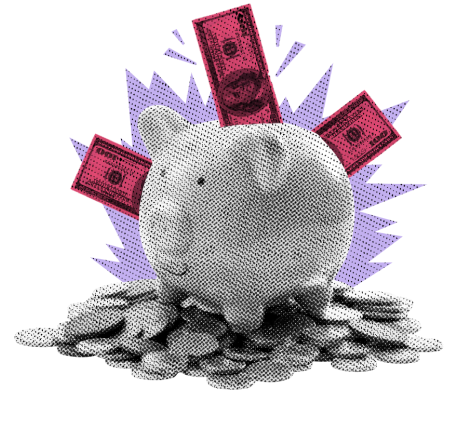Stocks fell on Friday after monthly employment numbers came in better than expected – high employment may mean that inflation remains sticky. Elon Musk announced a -10% workforce reduction at Tesla and the entire market soured.
Two sides of a coin. It is not easy to have a conviction in the stock market… at least for those that are paying attention. Wouldn’t it just be simple if you could say something like “Tesla is a cool company, I see its cars all over the road, EV is the future, so therefore, buy Tesla stock and make a bundle?” You are either chuckling right now or thinking “how does Mark know what I am thinking?” Of course, you all know that it is not so simple. Recently, the performance of the stock market has been very closely linked to macroeconomic forces which, like stocks, also have two sides to every story, making it difficult to form a simple investment thesis like “things are good with the economy, so stocks should go higher.” Notice the emphasis on the word should.
The reality is that there are some periods where forming a simple investment thesis is easier than others. This happens not to be one of those times. We just wrapped up Q1 earnings season which overall painted a picture of relative health for corporations, however markets gave mixed reviews on the performance. There are always those companies that simply miss the mark with bad excuses. Let’s not worry about those for this discussion. Then there are companies that beat the mark by a mile but warn of future challenges. That was a common theme in this past earnings season in which many companies paired back future guidance, largely due to ongoing supply chain problems or increased costs. Those companies were mostly punished by the markets, but a respectable minority of them managed to gain on the mixed news. That is where the confusion begins. Is it really bad when a company announces that its sales growth will be slower than it was last year, though last year’s growth was an anomaly due to the post-COVID economic boom? Even though this year’s growth is still higher than its pre-COVID growth? Should the stock go up or down from here? Tough call, right?
How about companies that beat EPS and Revenue estimates and reiterate their forward guidance. That should be a no-brainer buy, wouldn’t you think? That was a rhetorical question. It is clearly not so simple to gauge market reactions to corporate announcements. Getting back to the economy, perhaps its recent performance holds some answers to why investing has been so difficult in recent months. We all know by now that inflation is a big challenge for the economy. It is tax on our earnings and our investments, and if left unchecked could cause the economy to fall into a recession. The Fed is responding with tough talk and aggressive action… which can also cause the economy to fall into a recession. The stock market is hoping for neither of those scenarios. Beyond that, stocks appear to be hoping for the Fed to pull back on its hawkish behavior… later this year. The problem is that, even though that is just 2 FOMC meetings away, it is too early to tell what the Fed might be doing in September. That is why anything that suggests that a kinder Fed may emerge in early fall can send stocks climbing… or vice versa for a tough Fed. In last week’s abbreviated session, we saw both extremes. Earlier in the week, data suggested that the Fed may ease up on its hawking in the final quarter, causing stocks to rally. On Friday, the monthly employment figures from the Bureau of Labor Statistics came in hotter than expected. Specifically, new Nonfarm Payrolls showed that +390k new jobs were added while economists were expecting a +318k gain. In any normal environment we should be able to form the simple thesis that “the economy is strong, so stocks should go higher.” This is clearly no normal environment, so the good news for the economy was interpreted as a driver of inflation… and Fed hiking, and the market reacted by sending stocks lower and short-term bond yields higher. But wait, there was another side to the story… a third side. Average Hourly Earnings rose by +0.30% in May while economists were expecting a higher +0.40% change. One might expect that to be a sign that inflation may be topping out as labor costs have been a big part of goods price inflation in recent months. More jobs are strong for the economy and lower wage growth is good for inflation… and a potentially less hawkish Fed. That seems like a simple enough setup for a stock rally, right? At this time, there is still a high level of volatility and indecision, but as we get closer to that earlier-fall inflection point, things should begin to become clearer, and we may have better insight into how the year will end up. But, as usual, there will be several sides to that story as well.
FRIDAY’S MARKETS
Stocks fell on Friday after a BLS employment report showed strong employment growth in May suggesting that the Fed will have to remain aggressive with rate hikes. The S&P500 fell by -1.63%, the Dow Jones Industrial Average slipped by -1.05%, the Nasdaq Composite Index dropped by -2.41%, and the Russell 2000 Index declined by -0.77%. Bonds fell and 10-year Treasury Note yields gained +3 basis points to 2.93%. Cryptos fell by -3.33% and Bitcoin declined by -1.93%.
NXT UP
- No economic data today, but the slower release week will bring up Consumer Price Index along with University of Michigan Sentiment later in the week. Refer to the attached economic calendar for times and details of the week’s releases.
.png)

